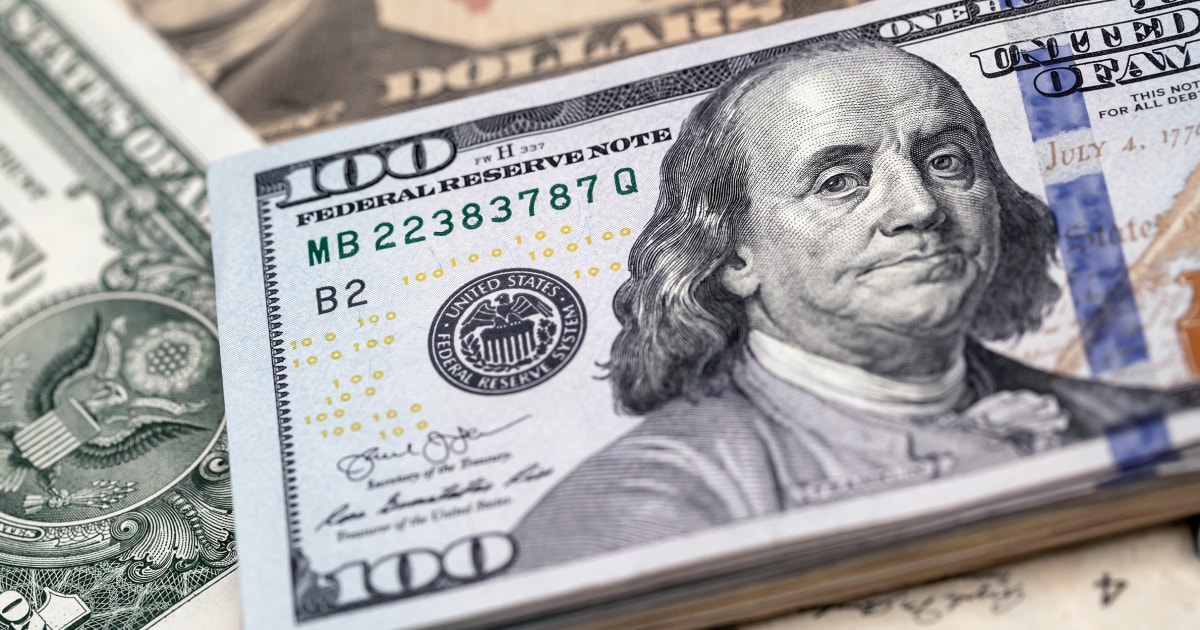By Mike Winters—
CNBC
Nearly half of Americans have $500 or less in their savings accounts, an amount that leaves them vulnerable to unexpected expenses, according to a November 2023 GOBankingRates survey of 1,063 adults.
About 29% of respondents have between $501 and $5,000 in their savings accounts, while the remaining 21% have $5,001 or more.
Furthermore, few have much money in their checking accounts.
Of those surveyed, 60% said they had $500 or less, while only about 12% said they had a balance of $2,001 or more.
The lack of cash in checking or savings accounts suggests that many Americans live paycheck to paycheck.
This makes them vulnerable to unexpected expenses, underscoring the importance of having an emergency fund.
No emergency funds
Financial planners often recommend keeping a cash reserve, known as an emergency fund, on hand to cover unexpected expenses.
However, many Americans don't seem to have one.
There are many reasons for that.
In some cases, Americans struggle to make ends meet during times of high inflation.
But in others, they may be professionals with a good socioeconomic level who are not in the habit of saving money.
[Inflation and the economy are among the biggest concerns of Latinos, according to a survey]
“Americans' inability to deal with an emergency that costs $500 or even $1,000
can be financially damaging
, and have a domino effect on your life,” says Alex Lozano, certified financial planner and founder of Lozano. Group Wealth Management.
That's because people often turn to high-interest credit cards to cover unforeseen expenses, he says.
“Accumulating debt can lead to a cycle of repayments and interest that can be difficult to escape,” says Christopher Lazzaro, chartered financial consultant and founder of Plan For It Financial.
“An emergency fund helps avoid falling into this debt trap.”
Lozano recommends aiming to create an emergency fund that is equivalent to between three and six months of your expenses, although “each person's situation is different.”
A single person or person with a non-working spouse could save 12 months of expenses, he says.
To start, you'll need to find room in your budget to make monthly emergency savings contributions, which may be easier said than done.
If you can't cut back on your everyday expenses, it may make sense to temporarily reduce contributions to retirement accounts.
“Before starting to invest for the future, you have to create an emergency account
,” adds Lozano.
It's okay to start small, even if it's only $20 a month.
The important thing is to get into the habit of making regular contributions, which you can increase later, when there is more income.
The smartest way to save emergency funds
Once you've saved some of your monthly income to build an emergency fund, it may be smart to save it in a high-yield savings account, where it will accumulate interest and can be quickly withdrawn in case of an emergency.
Currently, high-yield savings accounts can be found with annual percentage returns close to 4.5%, compared to an average of 0.6% for all savings accounts, according to Bankrate.
However, only 9.8% of respondents say
they have a high-yield savings account
, according to GOBankingRates.
One of the reasons people don't switch to one of these accounts, despite better interest rates, is inertia, as many already have a traditional savings account with the bank they've been with for years. years.
But the higher interest rates may be worth it.
A $500 balance in a high-yield account offering 4.5% is equivalent to $22.50 in interest after one year, versus three for a traditional savings account.
While it may not seem like a lot of money at first, it will continue to grow over time, especially if you build up an emergency fund to cover several months of expenses.

